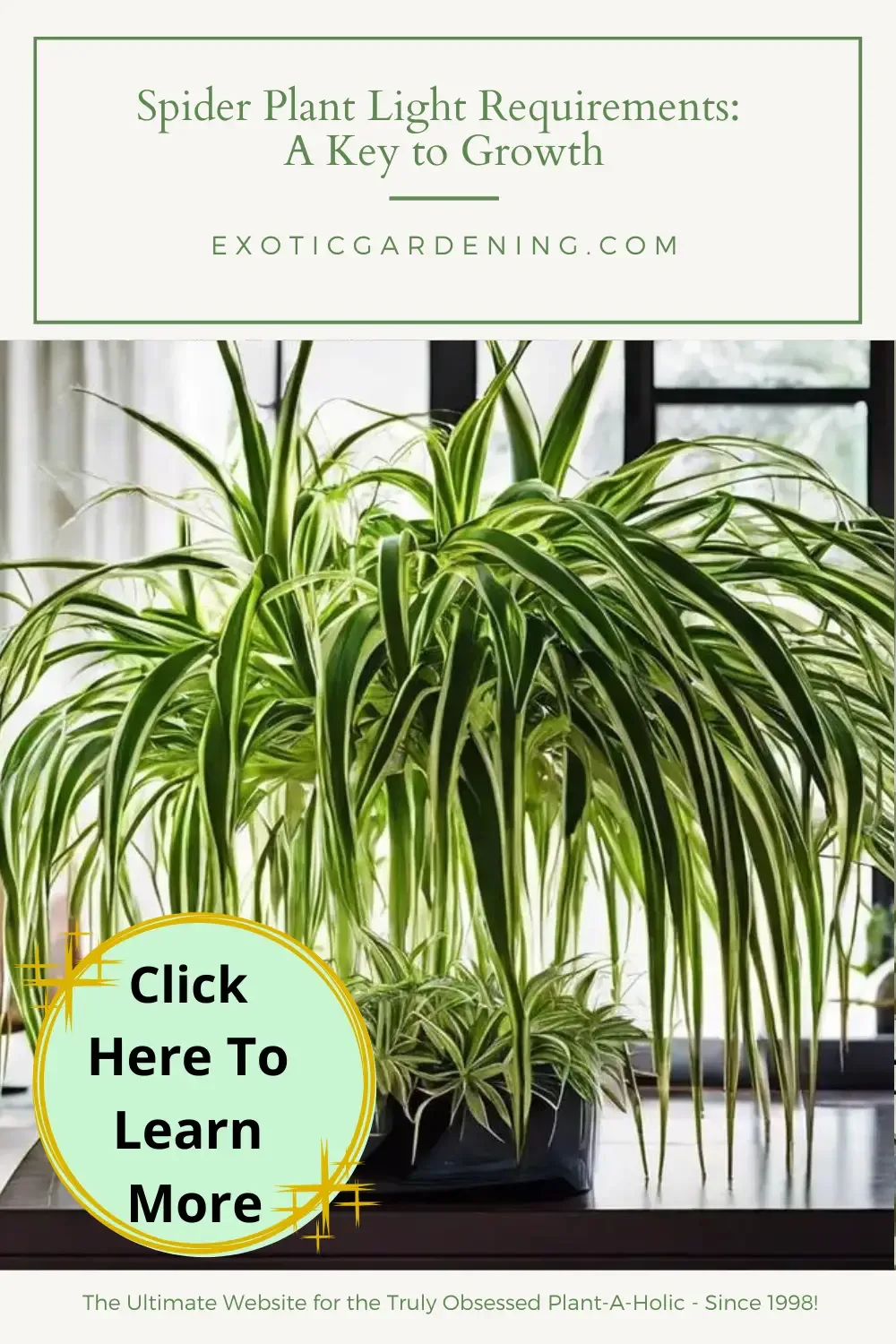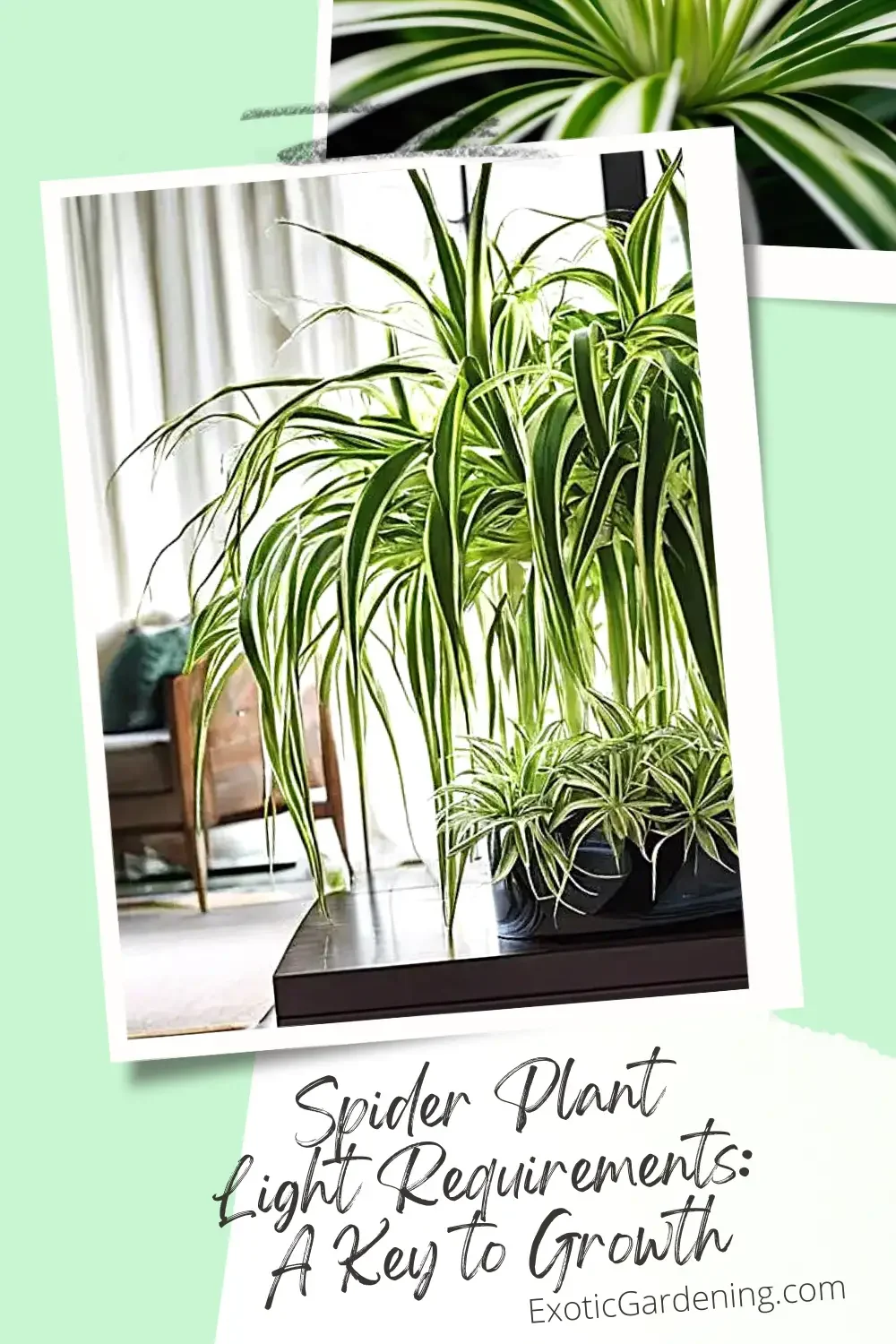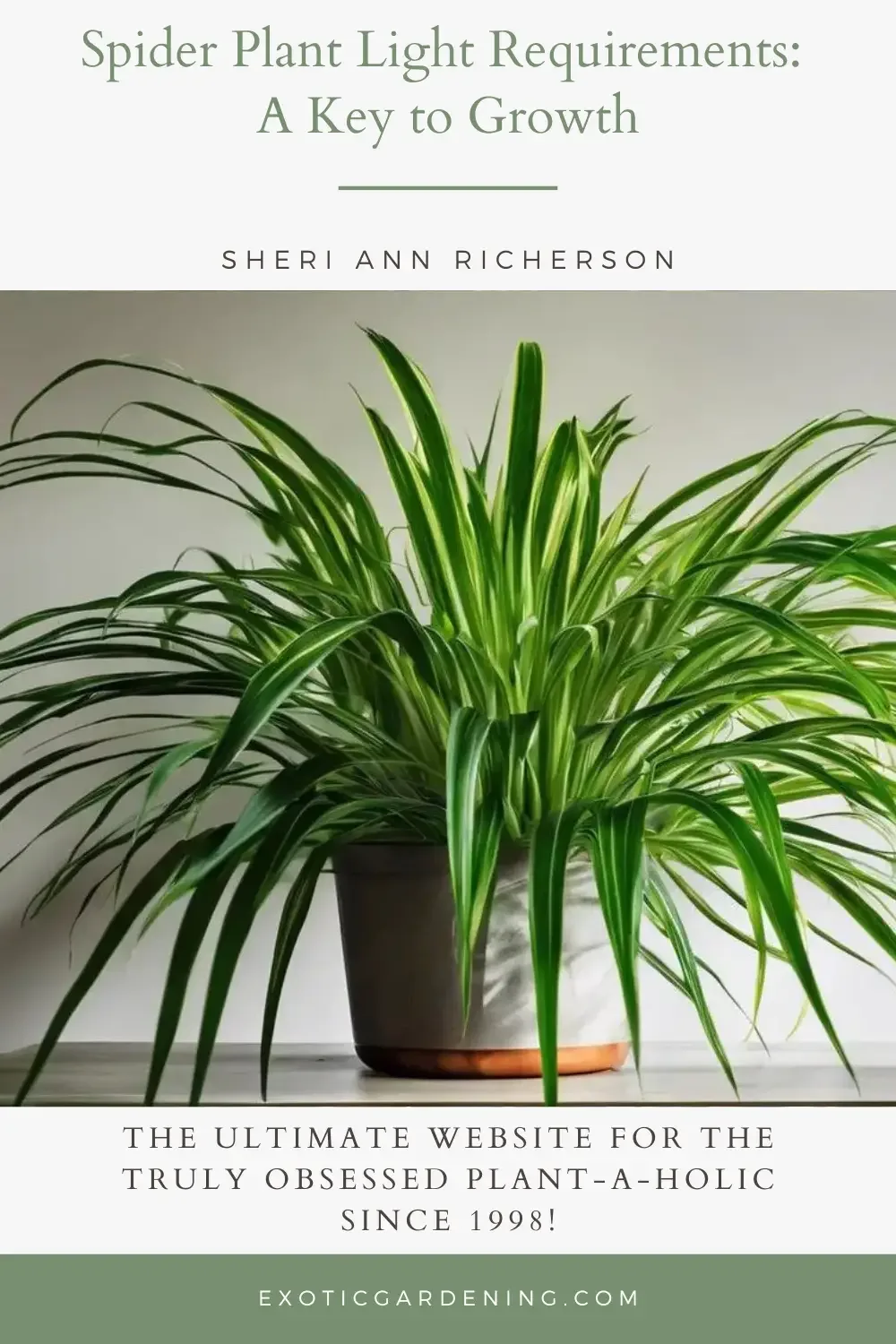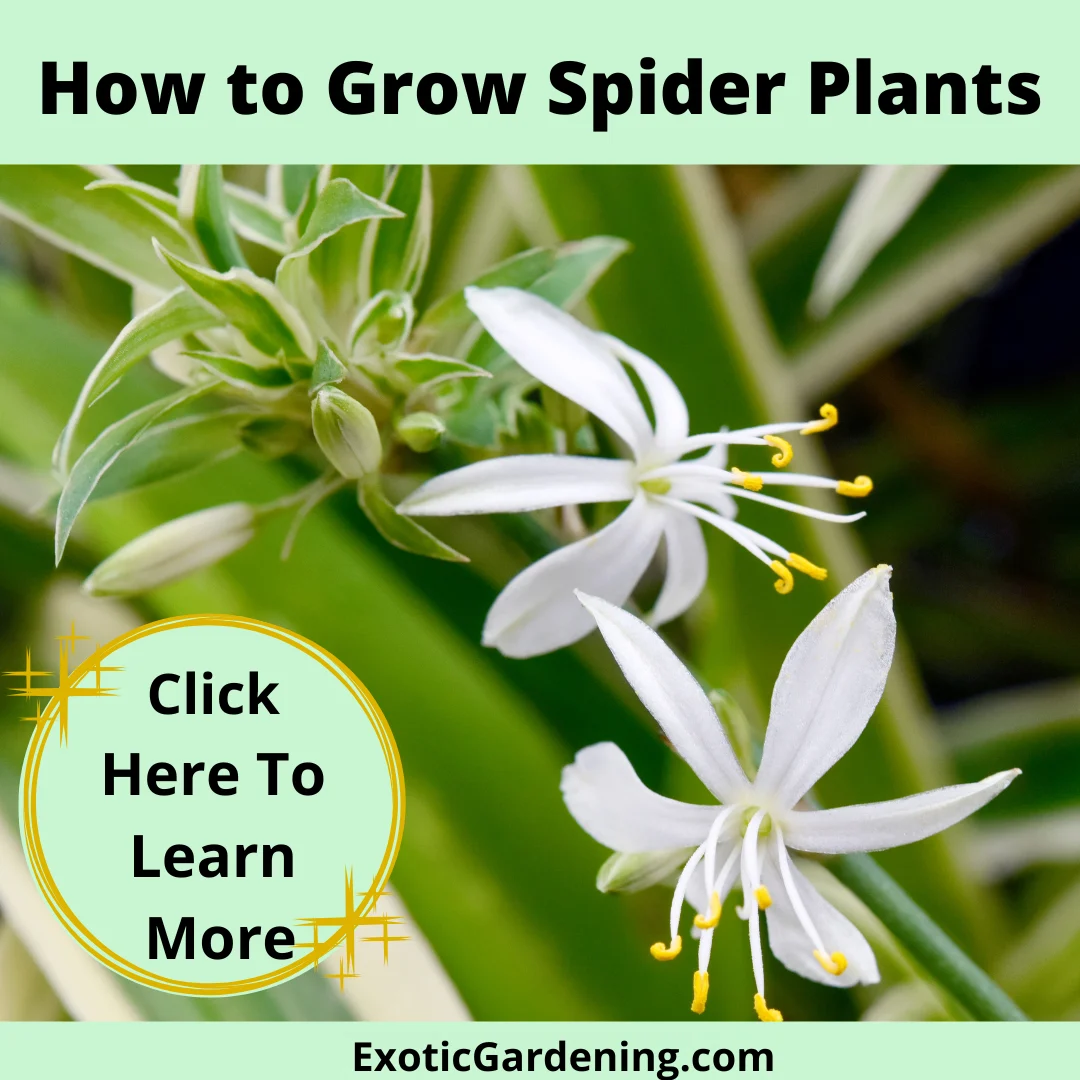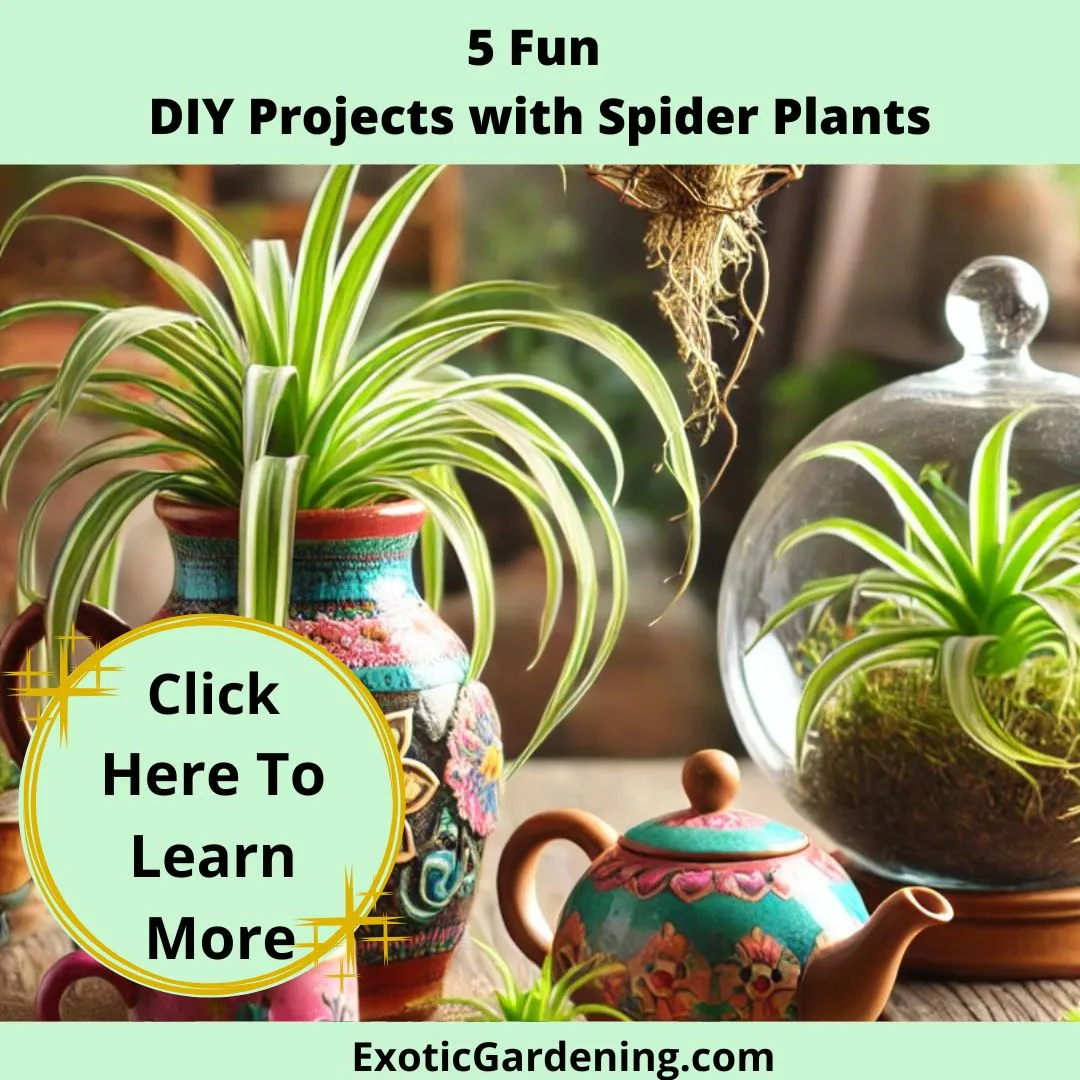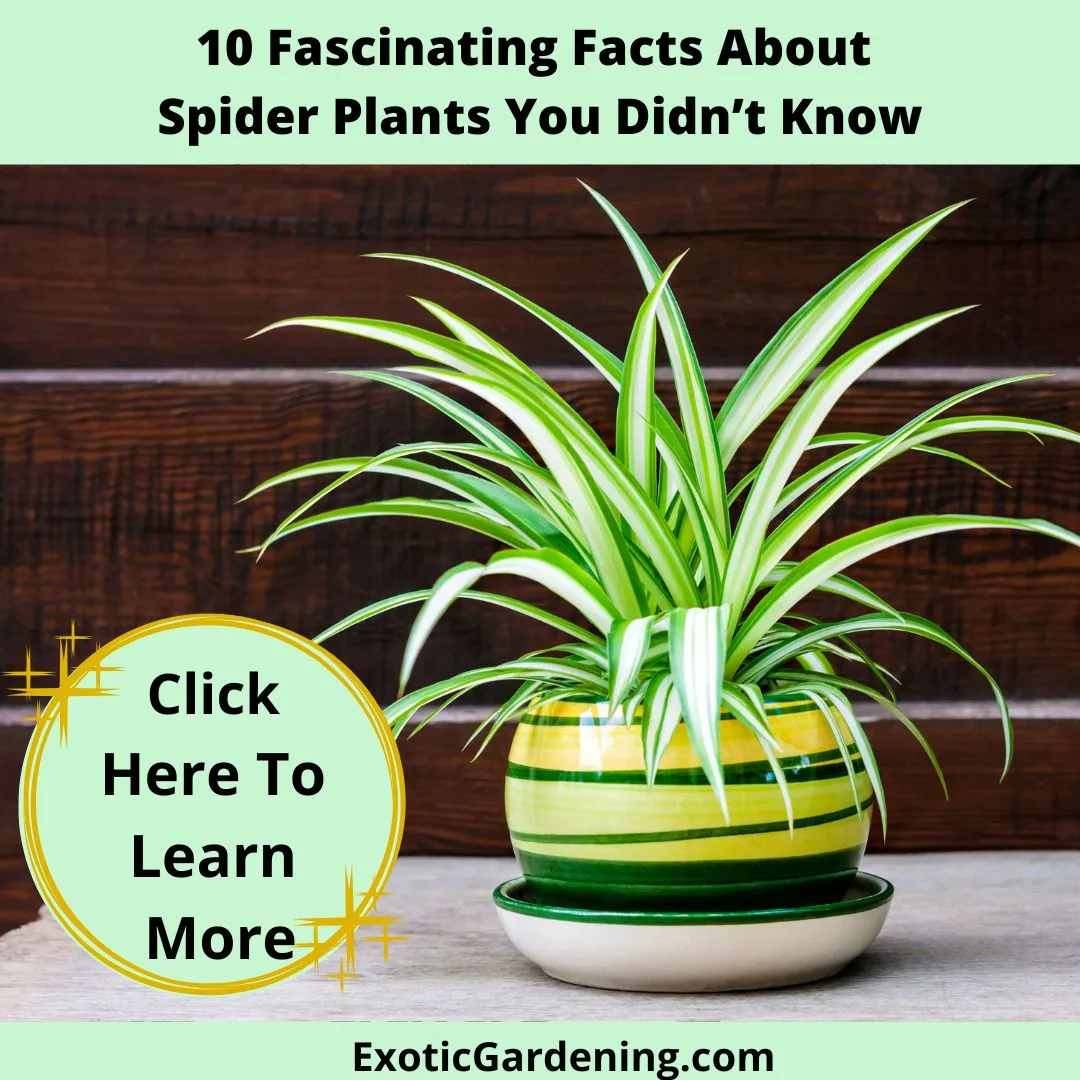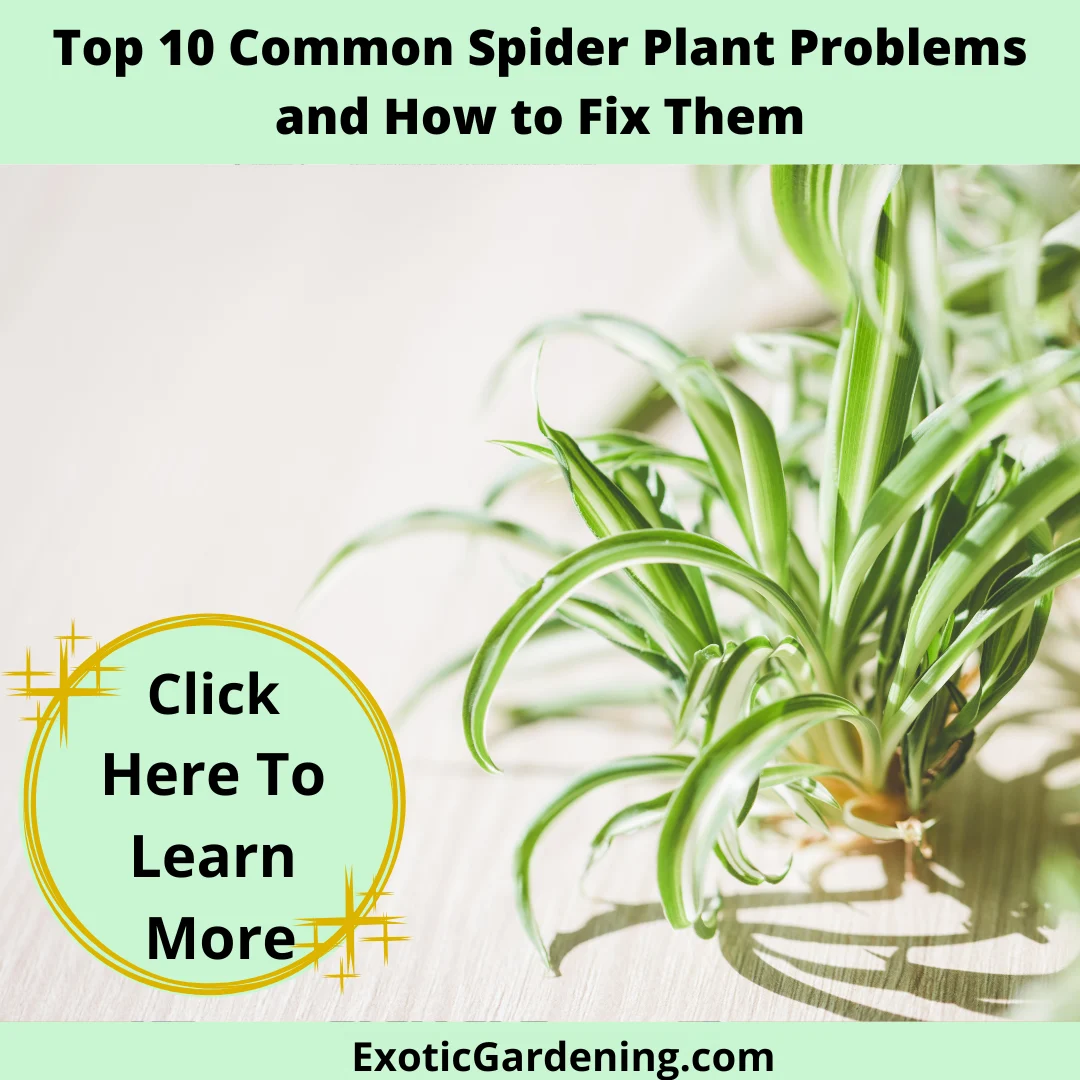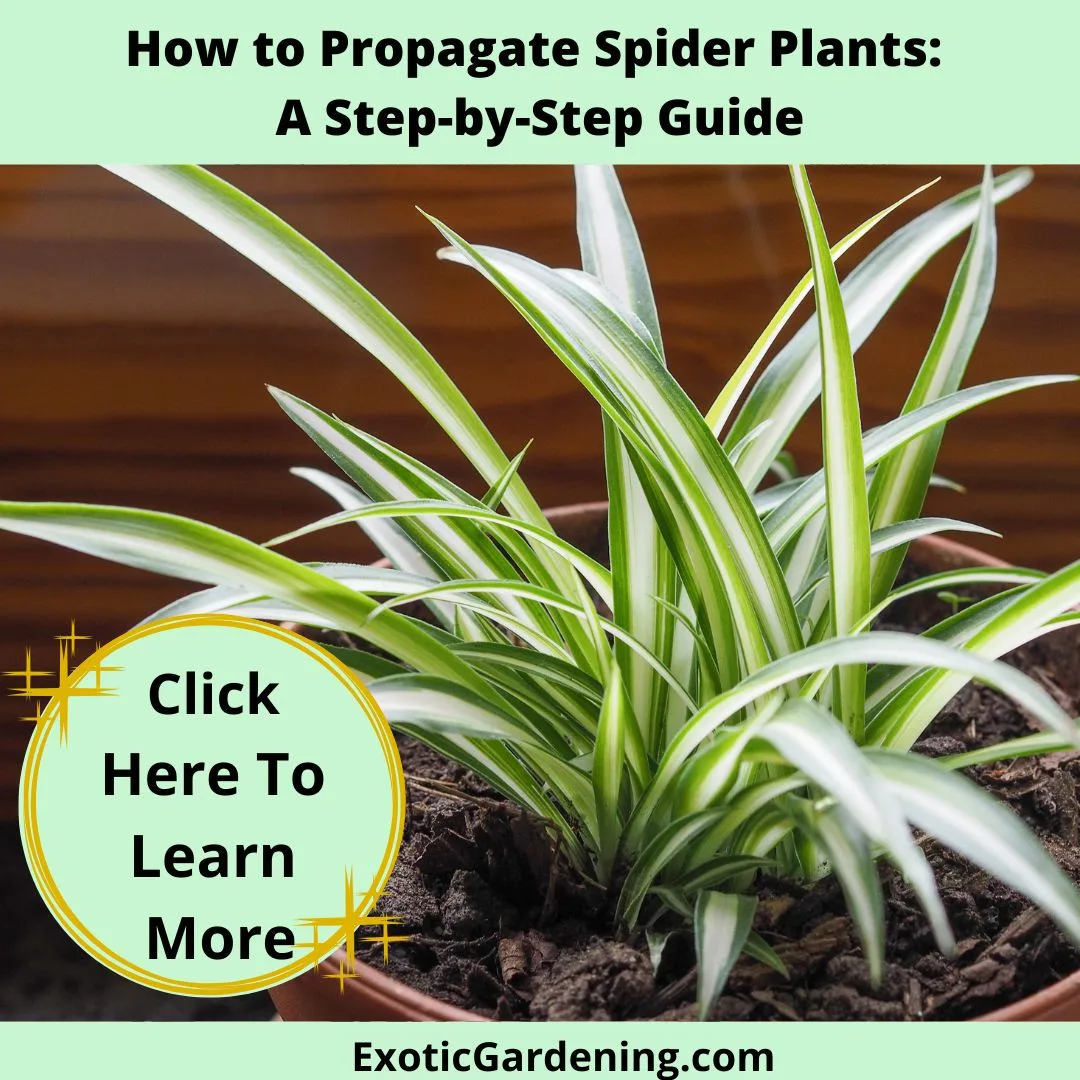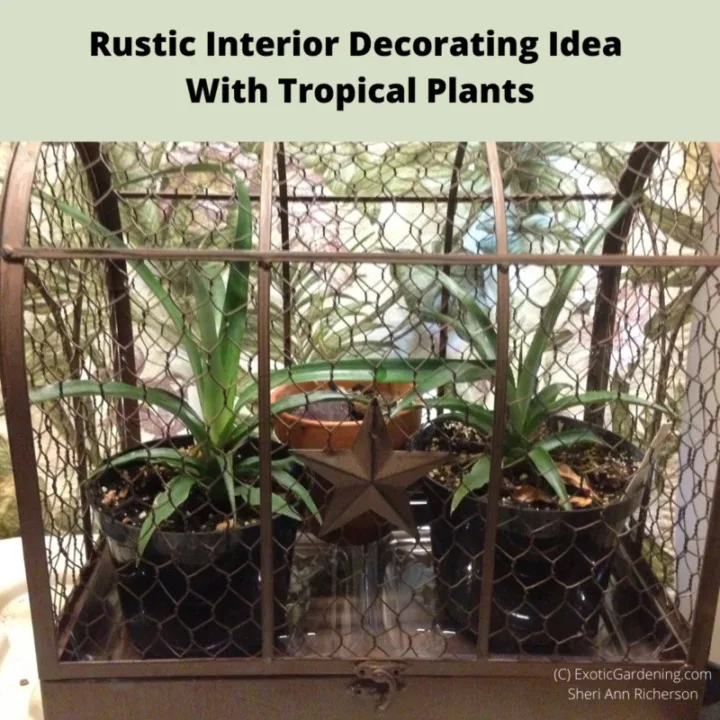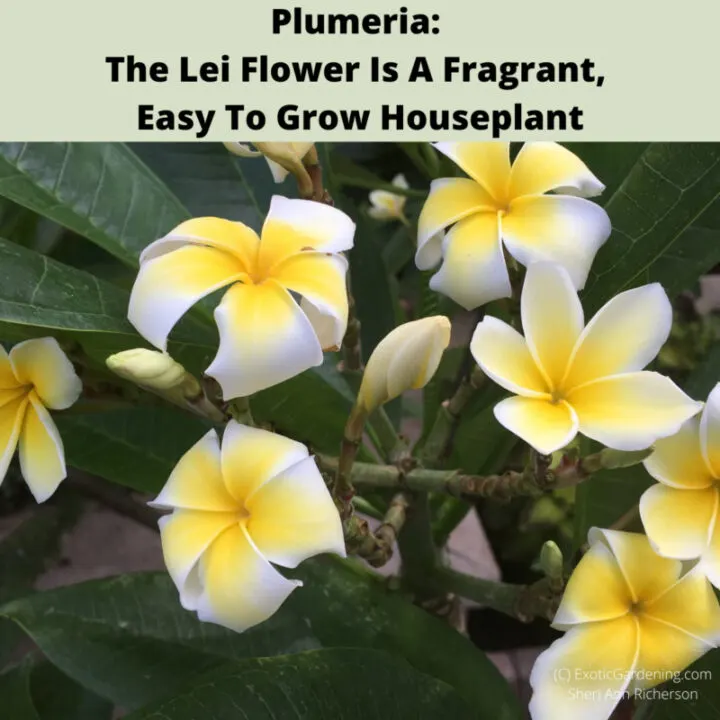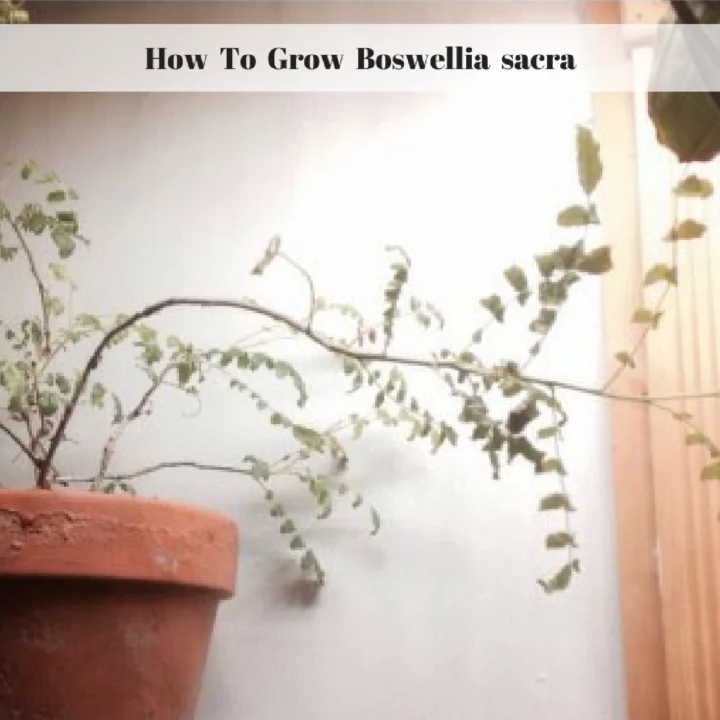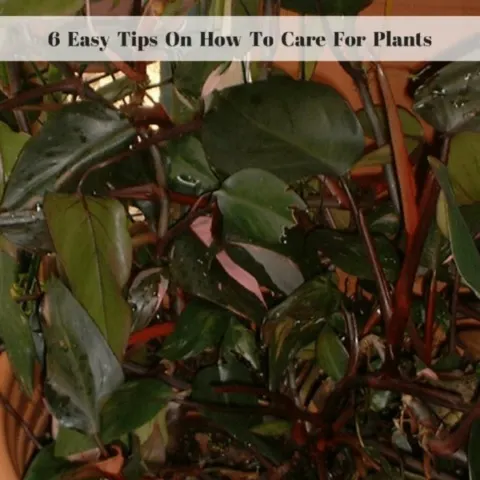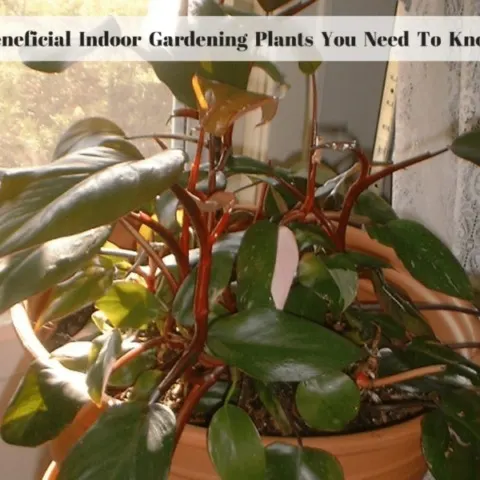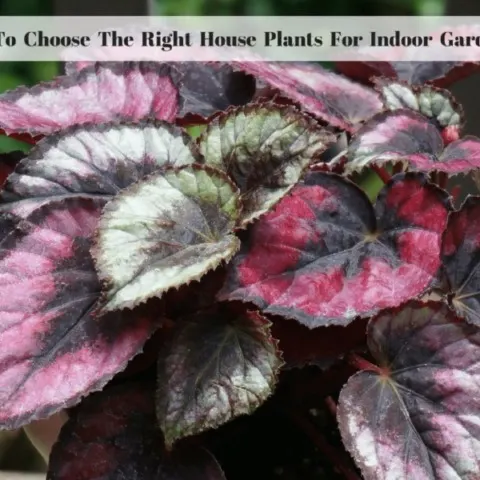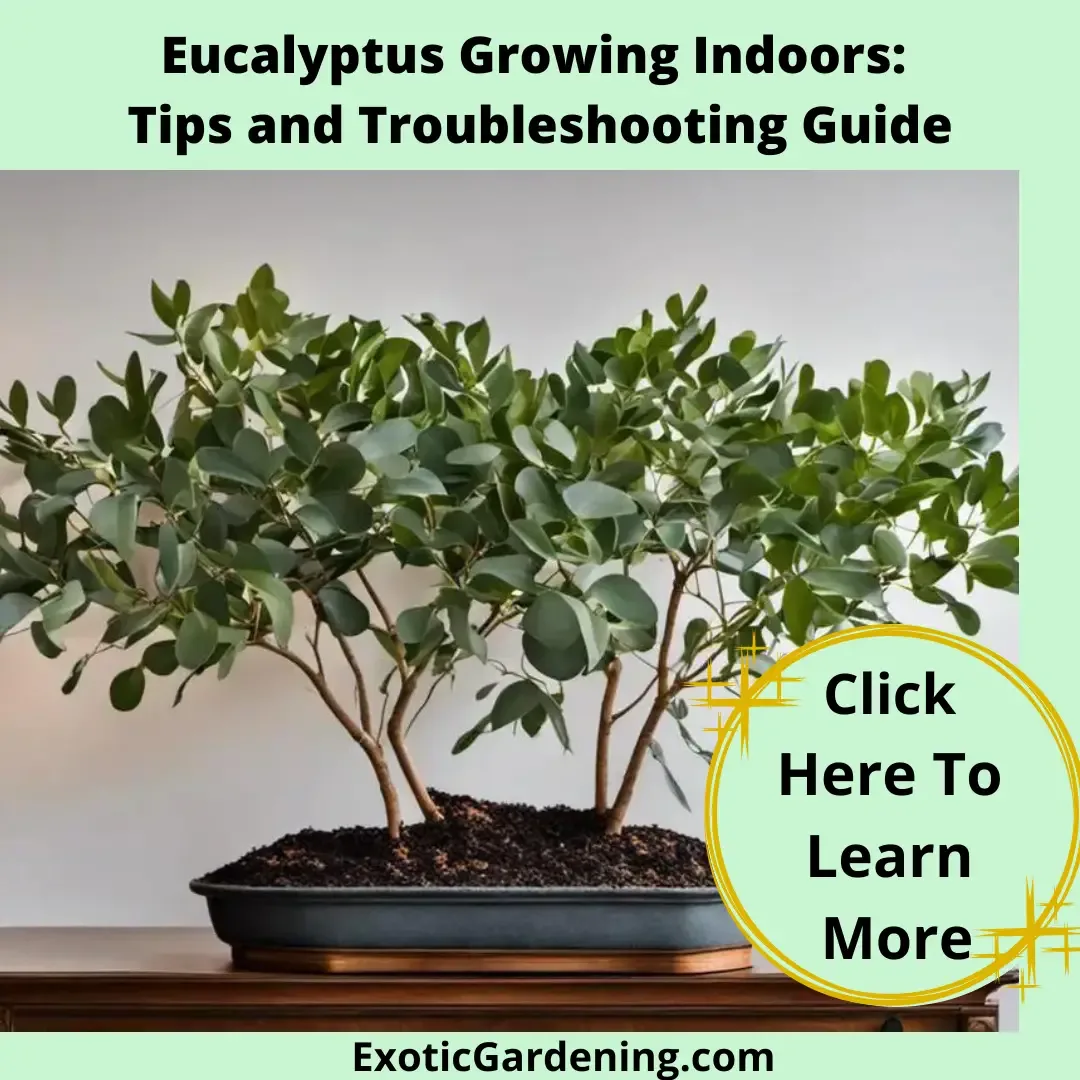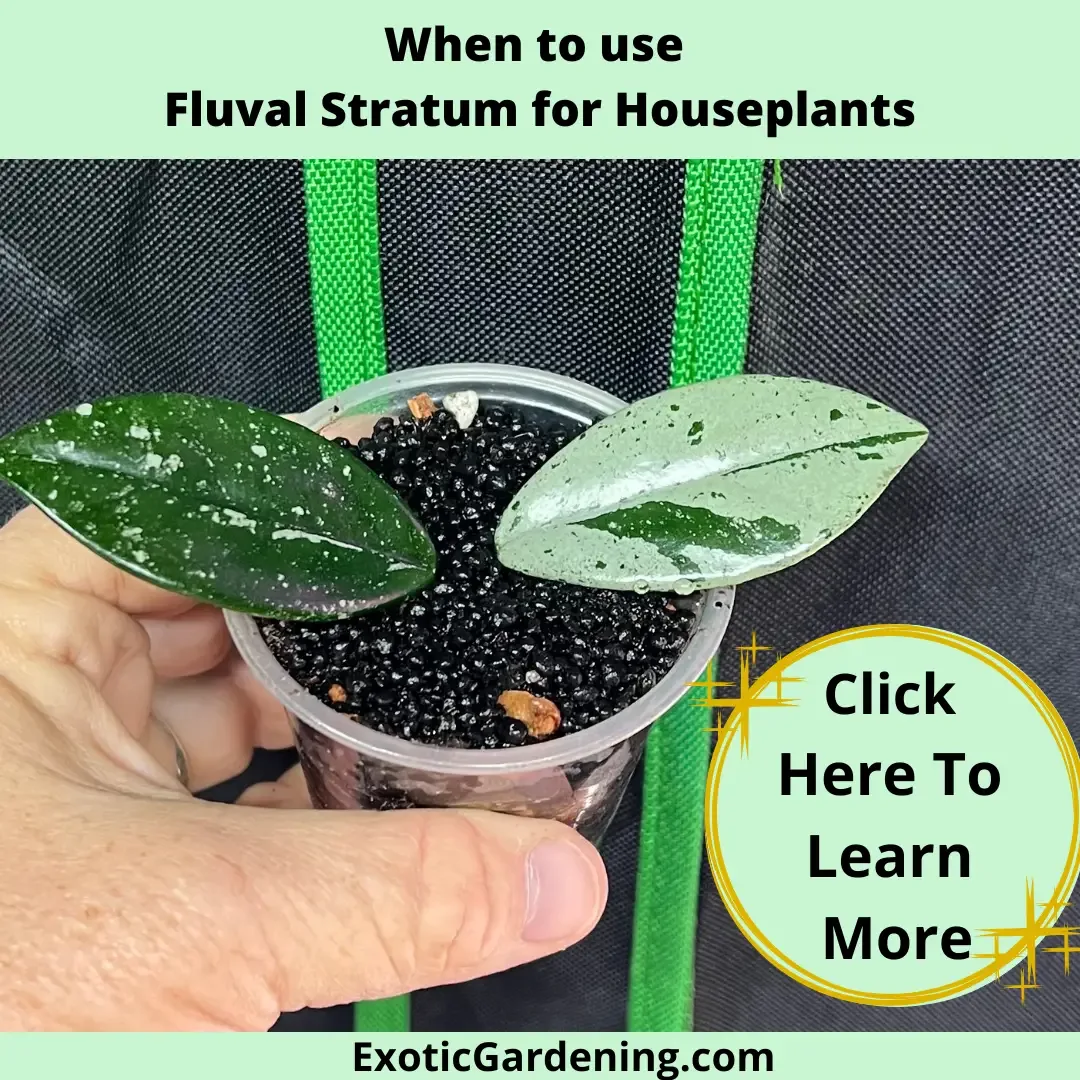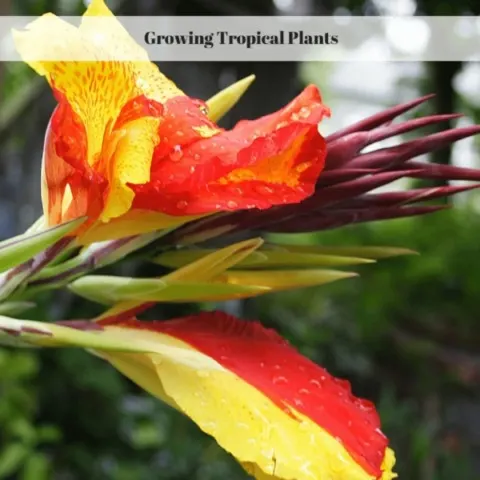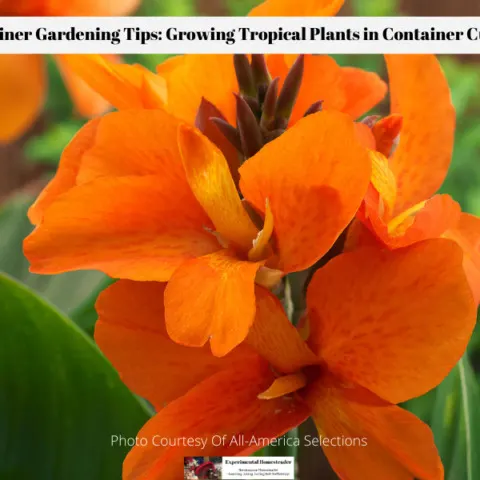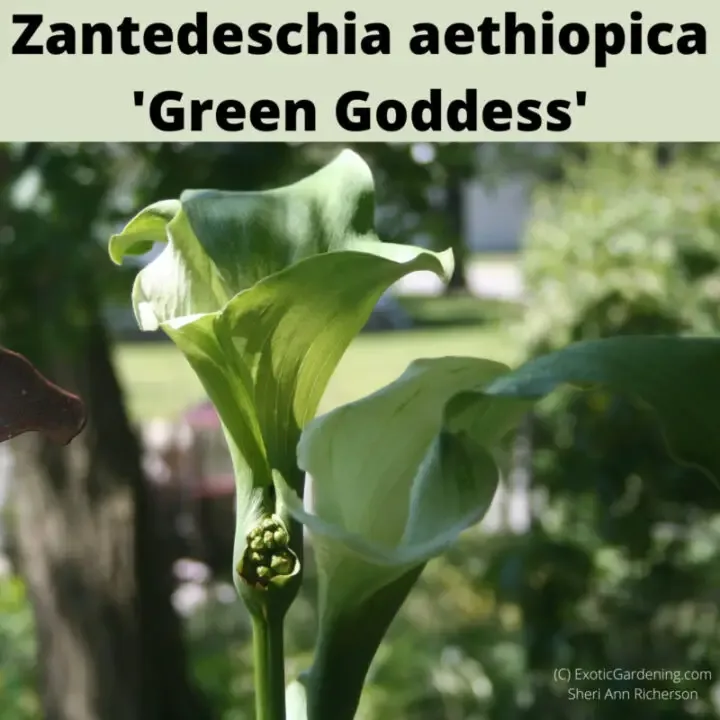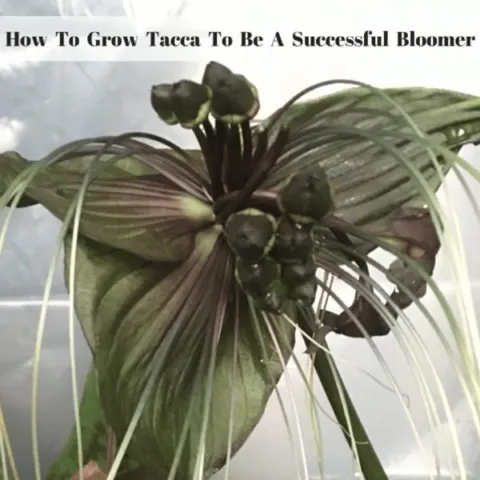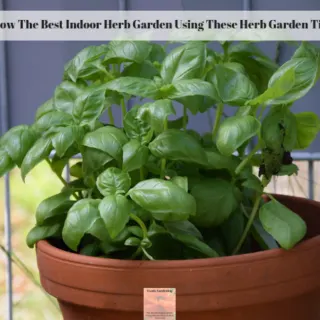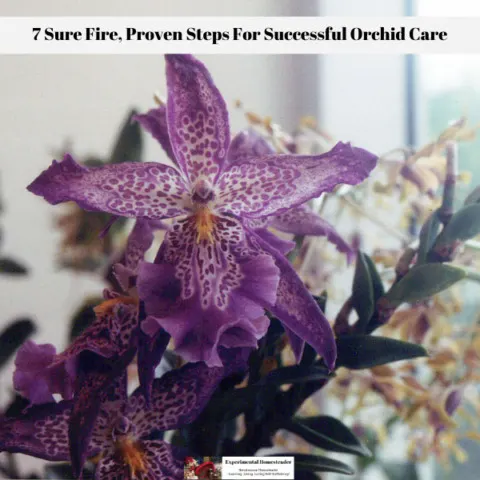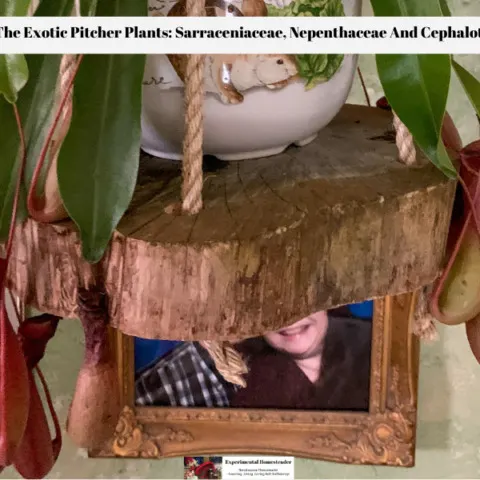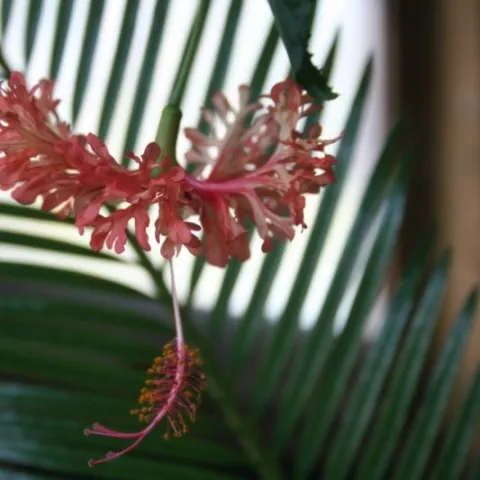Spider Plant Light Requirements are like the secret code to unlocking this green beauty's full potential.
Imagine a humble yet strikingly attractive houseplant, with its gracefully arching, variegated leaves and tiny white blossoms, thriving in bright, indirect sunlight—the Spider Plant.
This fascinating greenery, native to tropical and southern Africa, scores high on adaptability, capable of flourishing indoors with minimal maintenance and light.
Named for its spider-like plantlets, or "spiderettes," this plant encore its remarkable capacity to tolerate varying light conditions—be it the dappled sunlight of its natural habitat or the subtle indoor lighting inside your house.
Now, let's talk about those intriguing spiderettes – the plant's charming offspring.
They epitomize the Spider Plant's flexibility, thriving in the dappled sunlight of their native habitat or the softer glow of indoor lighting.
In this exploration, we'll delve into the heart of the Spider Plant's universe, unraveling the mysteries surrounding its exact light requirements.
Join me on this green adventure, ensuring your Spider Plant not only survives but flourishes, adding its unique charm to your living space.
It's a journey filled with insights you won't want to miss!
Understanding the Spider Plant
Today's star is none other than the resilient and distinct Spider Plant, scientifically known as Chlorophytum comosum.
If you're on the lookout for a low-maintenance companion, a spider plant is an excellent choice.
Understanding their unique features and growth habits will not only enhance your gardening expertise but also transform your indoor green spaces remarkably.
The Allure of Spider Plant Foliage
When you lay eyes on a Spider Plant for the first time, you'll instantly notice its vibrant, verdant green foliage arranged elegantly in a rosette of striped, ribbon-like leaves giving it an undeniable charm.
The most common varieties have leaves with green edges and a streak of white or yellow running down the middle, although solid green variants do exist.
These leaves, besides being beautiful to observe, are experts in purifying the air by absorbing pollutants; this makes keeping a Spider Plant indoors doubly beneficial!
Spiderettes and the Art of Replication
Uniquely, Spider Plants are named after their peculiar offset growth habit.
They produce long, drooping stems called 'stolons' that bear miniature versions of the parent plant, also known as 'pups or 'spiderettes'.
This fun and unique characteristic of replicating itself gives it the appearance of a multitude of spiders dangling on a web – a quirky trait that stands testimony to its name.
This feature also makes propagation of the Spider Plant extremely easy, and aids in creating lush hanging baskets or pots that bring a touch of green to any room or porch.
Take the Guesswork Out of Growing Spider Plants!

Struggling to keep your spider plant looking lush and vibrant? Between figuring out when to water, how much sunlight it needs, and how to tackle pests, it’s easy to feel overwhelmed. That’s why I created the Spider Plant Care Planner—the perfect tool for plant lovers who want healthier, thriving plants without all the stress.
- Track watering schedules, sunlight exposure, and pest prevention.
- Get seasonal care tips specific to spider plants (yes, they have different needs in summer and winter!).
- Keep things organized with an easy-to-use format designed for busy lifestyles.
Whether you’re a beginner or a seasoned plant parent, this planner will help you grow beautiful spider plants with confidence. Plus, for a limited time, you can snag it at $3.00. Don’t miss out—your spider plant will thank you!
Seasonal Thriving and Light Tolerance
The growth of Spider Plants can be quite vigorous during the warm spring and summer months.
They thrive in bright, indirect light but are amazingly adaptable and can tolerate lower light conditions.
Don’t be dismayed if you don’t have a perfect sun-kissed window, Spider Plants still show their remarkable resilience in less-than-ideal lighting.
Watering Wisdom for Spider Plant Care
When it comes to watering, they prefer a 'drier' regime.
They're more susceptible to root rot from overwatering than they are to drought.
Hence, it is always advisable to let the soil dry out between thorough watering sessions.
Also, keep in mind that Spider Plants are sensitive to certain chemicals found in tap water such as fluoride and chlorine.
To ensure a healthy, thriving Spider Plant, it's best to water them with distilled, rain, or left out tap water.
In fact, if you find the tips of your Spider Plant’s leaves turn brown, don’t panic!
That's often a sign of chemical buildup in the soil, which can be reduced with a good flush of water and better watering practices.
The Joy of Nurturing Spider Plants
Now for the love of nurturing something unique, or a simple joy of enhancing the green corners of your abode, Spider Plants come as a fascinating investment of your time and effort.
They're not only aesthetically pleasing but also incredible air-purifiers.
Their easy propagation and growth habits make them the perfect companions for beginners and seasoned hobbyist planters alike!
Setting the Stage: Perfect Lighting Conditions for a Flourishing Spider Plant
Esteemed plant enthusiasts and hobbyists worldwide know that the epically resilient Spider Plant is famed for its adaptability - a veritable chameleon of the indoor plant kingdom.
The Dance of Light and Adaptability
Although this hardy species could survive in varying light conditions, the secret sauce to its vibrant aesthetics lies in the harmonious convergence between its light intake and its overall environment.
Let's shed a little more light on that – pun fully intended!
For a Spider Plant to truly thrive, moderate indirect light is the balance to strike.
This 'Goldilocks zone' allows our sprouting heroes to exhibit their full spectrum of lush green vibrancy without the burden of undesirable leaf burn.
Direct sunlight may give your Spider Plant an unwanted sunburn, and we certainly don't want that.
Remember, striking a balance is key.
Variegation Vibrancy under the Spotlight
What's more is the vibrancy of its variegated foliage which could depend on light exposure.
Under bright, indirect light, their variegation could be more pronounced, leaving you with a visually appealing, stripe-ridden plant friend.
On the other hand, a darker setting might make its unique pattern less noticeable.

🌿 Pro Tip: Looking for unique ways to display your spider plants? Explore creative and inspiring ideas to beautify your space.
Click here to read "5 Creative Spider Plant Display Ideas For Your Home"
Beware the Shadows: The Dark Side of Low Light
Now, be forewarned, while our ever-resilient Spider Plant isn't a stickler for constant sunlight, they're not fans of the dark either.
If left in low light for too long, their growth slows down, and those spidery offshoots may become a rare sight!
It's a testament to its adaptability that they continue to survive, albeit at a slower pace.
Shining a Light on Artificial Solutions
So, what can one do if hit by a cloud-covered week or living in less sun-lit spaces?
A tried-and-true solution is artificial lighting.
The radiant glow from a grow light fills the void quite well.
Place them within 8 to 12 inches of the light source, and watch as your Spider Plant flourishes.
They'll thank you for your dedication with improved vitality and possibly those oh-so-coveted 'baby spider' offshoots.
Spider Plant Magic: Green Wonderlands Unleashed
With Spider Plants, we have a remarkable opportunity to dabble in indoor gardening without fear of high-maintenance restrictions.
As long as we don’t push them into extreme light situations and remember the virtue of balance, our beloved Spider Plants are poised to transform indoor environments into green and grown wonderlands — one long leaf and spiderette at a time.
Signs of Inadequate Light Exposure
As much as Spider Plants bring joy to the hearts of plant enthusiasts with their cascading leaves and easygoing nature, it's essential to know how different lighting conditions can affect them.
Putting your green thumb to work while keeping an eagle eye on the signs of inapt light exposure is a must for anyone passionate about these fetching houseplants.
The Optimal Glow: Bright, Indirect Light
Though Spider Plants can manage in a range of light environments, they have an optimal lighting condition at which they truly flourish - bright, indirect light.
Nonetheless, learning the signs of improper light exposure in these resilient beauties is the secret to ensuring they live their best leafy life.
Signs of Light Overindulgence
Notice a couple of telltale signs when your Spider Plant might be getting more light than it bargained for.
Too much direct sunlight may scorch the leaves, causing them to develop unsightly brown tips or even completely wilt and dry out.
Furthermore, if the vivid, characteristic stripes on the leaves begin to fade, it's an undeniable sign that the plant is receiving an excess of direct sunlight.
The Struggle in Low Light
On the other hand, not enough light isn't a walk in the park for this plant species either.
Warning signs that a Spider Plant craves more lighting include yellowing of its leaves and stunted growth.
The plant's offset growth habit - the production of baby spiderettes on long, hanging tendrils can also be dramatically impacted by low light.
Should the plant not produce as many offshoots as your green thumb expects, it may be an indication of insufficient light.
Variegation Drama: A Lighting Story
Analysis of the plant's variegation can also provide insight into its light exposure.
Variegated Spider Plants, characterized by their stunning edge-striped leaves, should maintain striking variegation in balanced lighting conditions.
A dramatic increase in green coloration could signal that the plant is trying to maximize chlorophyll production to compensate for low light, while a decline in variegation might mean the plant’s getting too much light.
Artificial Light to the Rescue
What to do if your domicile doesn't provide the ambient light your Spider Plant needs? Fear not, because artificial light supplies a superb fallback.
Using fluorescent lights or specialized plant lights can make a world of difference for Spider Plants struggling in low light conditions.
Symbiotic Harmony with Spider Plants
The relationship between spider plants and their caretakers is truly a symbiotic one, with the plants bringing a touch of nature into homes and offices while getting the attention they need to thrive.
Being aware of these critical signs and acting promptly to modify lighting conditions ensures the sustainability of this relationship.
Being armed with the knowledge of ideal light conditions, strategies to combat poor light, and recognizing the signs of light distress is critical.
As you continue your journey with nurturing Spider Plants, always remember that their adaptability is their strength.
They will forgive occasional light hiccups, but consistent optimal light is key to their vigorous presence.
Related Posts You’ll Love:
- How to Grow Spider Plants
- 5 Creative Spider Plant Displays for Your Home
- 10 Fascinating Facts About Spider Plants You Didn't Know
- Top 10 Common Spider Plant Problems and How to Fix Them
- How to Propagate Spider Plants: A Step-by-Step Guide
- 5 Fun DIY Projects With Spider Plants
Spider Plants FAQ
Q. Can Spider Plants Survive in Low Light Conditions?
A. Yes, Spider Plants are adaptable and can tolerate lower light conditions, but they thrive best in bright, indirect light.
Q. How Often Should I Water My Spider Plant?
A. Spider Plants prefer a 'drier' watering routine. Allow the soil to dry out between thorough watering sessions to prevent overwatering.
Q. What Causes Brown Tips on Spider Plant Leaves?
A. Brown tips can result from too much direct sunlight or a buildup of chemicals in the soil. Adjusting light exposure and using distilled water can help.
Q. Can Spider Plants Grow in Artificial Light?
A. Yes, Spider Plants can thrive under artificial lighting, such as fluorescent or LED lights. Ensure the light source is not too strong and is placed at an appropriate distance.
Q. How Do I Propagate Spider Plants?
A. Spider Plants are easily propagated by separating the 'pups' or spiderettes from the parent plant and replanting them.
Q. Why is My Spider Plant Losing Variegation?
A. Variegation loss can be due to prolonged low light conditions. Providing balanced light exposure helps maintain the characteristic striped patterns on the leaves.
Q. What Causes Yellowing Leaves in Spider Plants?
A. Yellowing leaves may indicate insufficient light. Adjust the plant's location to ensure it receives an adequate amount of light for healthy growth.
Q. Can Spider Plants Purify Indoor Air?
A. Yes, Spider Plants are known for their air-purifying qualities, absorbing pollutants and contributing to improved indoor air quality.
Q. Is Tap Water Safe for Spider Plants?
A. Spider Plants can be sensitive to certain chemicals in tap water. It's advisable to use distilled, rain, or left-out tap water to avoid issues like leaf browning.
Q. How Fast Do Spider Plants Grow?
A. Spider Plants exhibit vigorous growth, especially during the warm spring and summer months. The rate of growth can vary based on factors like light and watering conditions.
Discover the Joy of Houseplants: Your Ultimate Resource Guide
Welcome to the ultimate guide for all things houseplants! Whether you’re a seasoned green thumb or just starting your indoor gardening journey, this curated list of articles has something for everyone. From detailed care instructions to creative decorating ideas, troubleshooting common issues, and learning about unique plant varieties, you’ll find everything you need to keep your indoor jungle thriving.
Explore topics like:
Essential care tips for popular houseplants.
Solutions to common problems like pests, watering mistakes, and lighting challenges.
Creative ways to display and style your plants.
Propagation guides to grow your collection.
Get inspired, troubleshoot challenges, and cultivate the lush, vibrant indoor space you’ve always dreamed of. Dive in and let your houseplants flourish with these helpful resources!
Mastering South-Facing Window Plants: Expert Tips for Your Lush Oasis
Discover the secrets of success with South-Facing Window Plants in our comprehensive guide. Transform your space into a green haven.
Transform Your Cozy Corner with these Perfect Plants for Small Spaces
Discover the beauty of compact gardening with our guide on choosing and caring for plants for small spaces.
The Complete Guide to Philodendron Pink Princess Care
Introducing the Philodendron Pink Princess
Allow me to introduce you to the crown jewel of my botanical collection – the enchanting Philodendron Pink Princess.
This recent addition is nothing short of a horticultural masterpiece, captivating the senses with its breathtaking display of colors.
Imagine deep, luxurious burgundy leaves, each adorned with bold splashes of vivacious pink.
The contrast is nothing short of a visual symphony, a natural work of art that commands attention.
As I gazed upon it for the first time, I couldn't help but marvel at the sheer beauty and grace that this plant exudes.
If you've never had the pleasure of setting your eyes on a Philodendron Pink Princess, consider yourself in for a treat beyond compare.
It's more than a plant; it's a showstopper, a conversation piece, and a living testament to the wonders of the natural world.
This captivating botanical gem promises to be a source of endless fascination and admiration in any space it graces.
Spider Plants: The Perfect Gateway Plant for Gardening Enthusiasts
Spider plants, the perfect gateway plant, add charm, purify air, and are ideal for beginners and seasoned gardeners alike.
How to Grow Spider Plants
Discover how to grow spider plants with expert tips on light, watering, soil, and more for thriving plants!
5 Creative Spider Plant Display Ideas for Your Home
Discover creative spider plant display ideas to elevate your home decor with unique, stunning, and easy-to-implement solutions.
5 Fun DIY Projects with Spider Plants
Explore creative DIY projects with Spider Plants, including terrariums, macramé hangers, and upcycled planters for vibrant decor.
10 Fascinating Facts About Spider Plants You Didn’t Know
Discover fascinating facts about spider plants, including their care, propagation, and unique qualities that make them standout houseplants.
Top 10 Common Spider Plant Problems and How to Fix Them
Discover solutions to common spider plant problems like brown tips, yellow leaves, and droopy growth to keep them thriving.
How to Propagate Spider Plants: A Step-by-Step Guide
Learn how to propagate spider plants with easy, step-by-step instructions to grow vibrant, healthy indoor plants effortlessly.
Rustic Interior Decorating Idea With Tropical Plants
Metal cages or even old bird cages filled with plants are a great way to add a rustic touch to your interior decor.
Plumeria: The Lei Flower Is A Fragrant, Easy To Grow Houseplant
Learn how to care for your Plumeria in ground and in containers. Because of the winter dormancy period it is ideal for summer containers.
Indoor Flowering Tropical Plants
There are a number of indoor flowering tropical plants that are easy to care for and bloom all winter long under the right conditions.
How To Grow Boswellia sacra
Boswellia sacra is the plant frankincense tears comes from. Learn how to grow the Boswellia sacra plant and what the various uses for it are.
6 Easy Tips On How To Care For Plants
Proper plant maintenance is essential if you want to learn how to grow healthy plants. Check out these six tips on how to care for plants.
Beneficial Indoor Gardening Plants You Need To Know
Learn about indoor gardening beneficial plants that are edible, help heal minor cuts or burns or those that help remove impurities from the indoor air.
How To Choose The Right House Plants For Indoor Gardening
Choosing the right plants for an indoor gardening environment is important for success. Many indoor gardening house plants are easy to care for.
How To Care For Holiday Plants
Have you ever wondered how to care for holiday plants such as the Poinsettia or the Christmas Cactus? If so, then check out this holiday plant care guide
Understanding and Treating Plant Blight: The In-depth Guide
Master treating plant blight with expert tips. Learn to protect your garden from this common threat. Essential insights inside.
Fall Tropical Plant Care: Transitioning Your Tropical Treasures in Autumn
Discover the secrets of successful Fall Tropical Plant Care. Learn how to transition your exotic plants for a thriving winter indoors.
Eucalyptus Growing Indoors: Tips and Troubleshooting Guide
Discover the art of eucalyptus growing indoors for year-round beauty and fragrant cut foliage in your flower arrangements.
When to use Fluval Stratum for Houseplants
Discover the perfect timing to use Fluval Stratum for houseplants and unlock vibrant growth in your indoor oasis. Learn more here.
How To Grow Bay Leaves Indoors
Discover the secrets of successful gardening with our guide on how to grow bay leaves indoors. Cultivate your own aromatic herb garden!
Easy Exotic Houseplants: Tropicals That Thrive Indoors in Containers
Tropical plants are the most beautiful, easy to grow indoor houseplants. Start growing exotic houseplants today that fruit and flower!
Brighten Up The Dull Days Of Winter With Blooms
Discover vibrant winter blooming houseplants that brighten your home with color and fragrance during the colder months.
Tips For Making A Moth Orchid Last From Costa Farms
Successful orchid care is pretty easy once you understand the seven basic steps the plant needs to thrive in your home environment.
Meet The Exotic Pitcher Plants - Sarraceniaceae, Nepenthaceae And Cephalotaceae
Learn about the exotic pitcher plants known as Sarraceniaceae, Nepenthaceae And Cephalotaceae including how to propagate them.
How To Grow Marimo Moss Balls
Learn how to grow Marimo Moss Balls and how to care for a moss ball to keep it happy. A Luffy ball is a very low maintenance plant.
Tropical Gardening: The Irresistible Allure & Addictive Power
Unveil the Addictive Allure of Tropical Gardening – From Starter Plants to Care Tips. Dive into #TropicalGardening!
Variegated And Other Interesting Plants: Elevate Your Space with Nature's Painted Wonders
Explore the world of variegated and unique plants, adding vibrant beauty and intrigue to your indoor oasis.
Tropical Plants For Medium To High Light
Check out these awesome tropcial plants for medium to high light that make wonderful, easy to care for houseplants.
How To Grow Tropical Plants
Growing tropical plants - also known as houseplants - indoors is fun and enjoyable plus many of them clean the indoor of pollutants.
It is easy to grow exotic looking plants that produce tropical fruit and colorful flowers in a pot in your living room or office.
Many of these plants are easy to start from seed and I share with you five plants that I recommend for indoor growing.
I also share with you why growing your own tropical fruit saves money.
In this video you will learn:
How to bring tropical plants indoors at the end of summer
How to grow tropical plants indoors
How to protect and overwinter tropical plants outdoors in cold climates
How to propagate tropical plants
How to water tropcial plants
How to grow topical plants in a greenhouse

